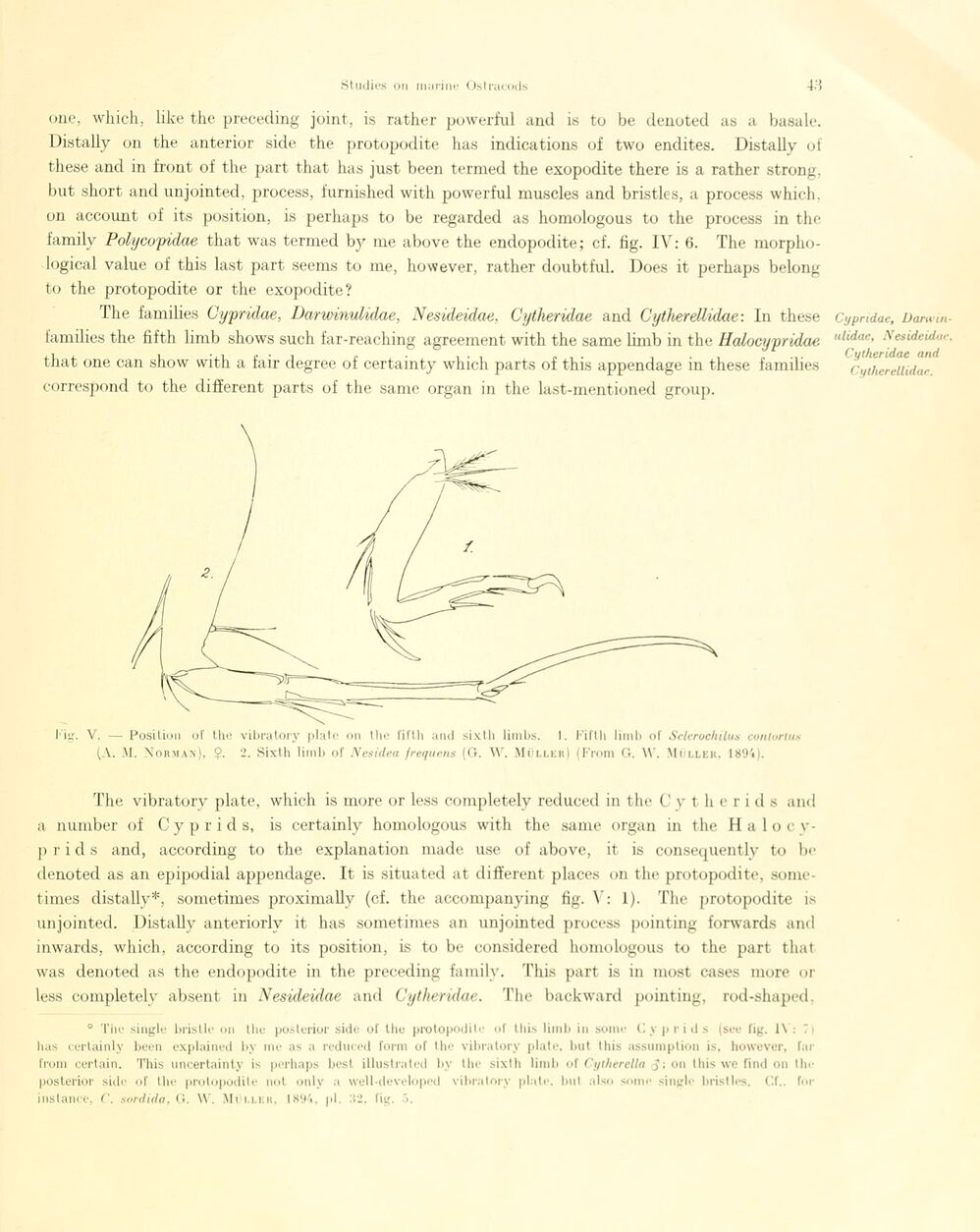
Full resolution (JPEG) - On this page / på denna sida - Sidor ...

<< prev. page << föreg. sida << >> nästa sida >> next page >>
Below is the raw OCR text
from the above scanned image.
Do you see an error? Proofread the page now!
Här nedan syns maskintolkade texten från faksimilbilden ovan.
Ser du något fel? Korrekturläs sidan nu!
This page has never been proofread. / Denna sida har aldrig korrekturlästs.
one, which, like the preceding joint, is rather powerful and is to be denoted as a basale.
Distally on the anterior side the protopodite lias indications of two endites. Distally oi
these and in front of the part that has just beeil termed the exopodite there is a rather strong,
but short and unjointed, process, furnished witli powerful muscles and bristles, a process which.
on account of its position, is perhaps to be regarded as homologous to the process in the
family Polycopidae that was termed by me above the endopodite; cf. fig. IV: 6. The
morplio-logical value of this last part seems to me, however, rather doubtful. Does it perhaps belong
to the protopodite or the exopodite?
The families Cypridae, Darwinulidae, Nesideidae. Cytheridae and Cytherellidae: In these
families the fifth limb shows such far-reaching agreement with the same limb in the Halocypridae.
that one can show with a fair degree of certainty which parts of this appendage in these families
correspond to the different parts of the same organ in the last-mentioned group.
The vibratory plate, which is more or less completely reduced in the C y t h e r i d s and
a number of Cyprids, is certainly homologous with the same organ in the Ha lo c
v-p r i d s and, according to the explanation made use of above, it is consequently to be
denoted as an epipodial appendage. It is situated at different places on the protopodite,
sonie-times distally*, sometimes proximally (cf. the accompanying fig. Y: 1). The protopodite is
unjointed. Distally anteriorlv it has sometimes an unjointed process pointing forwards and
inwards, which, according to its position, is to be considered homologous to the part that
was denoted as the endopodite in the preceding family. This part is in most cases more or
less completely absent in Nesideidae and Cytheridae. The backward pointing, rod-shaped,
* The single brislle on the posterior side of the protopodite of this limb in some C y prids (see fig. 1\ : Ti
has certainly been explained by me as a reduced form of the vibratory plate, but this assumption is, however, far
from certain. This uncertainty is perhaps hest illustrated by the sixth limb of Cylherella cJ; on this we find on the
posterior side of the protopodite not only a well-developed vibratory plate, but also some single brist les. Cf.. for
instance, C. sordida, G. W. Mvi.lek, 1894, pi. 32. fig. 5.
Cypridae,
Darwin-ulidae, Nesideidae.
Cytheridae and
Cylherellidae.
<< prev. page << föreg. sida << >> nästa sida >> next page >>